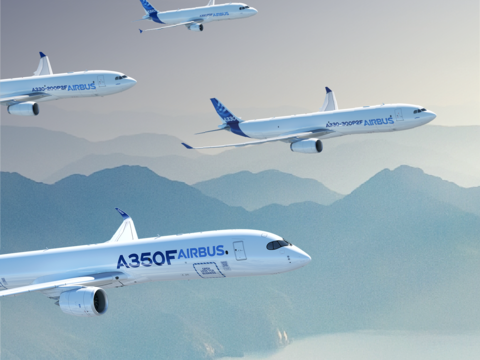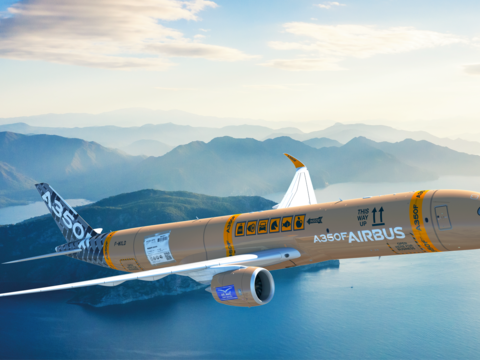Airbus’ 2024 Freighter Global Market Forecast (GMF) shows the worldwide fleet of dedicated freighter aircraft growing by half from the end of 2023 to 2043, with the number of aircraft increasing from 2,220 to 3,360. Almost 900 aircraft of the current fleet will remain in service over the period, requiring 2,470 freighter deliveries to meet replacement (1,330 aircraft) and growth (1,140 aircraft). These 2,470 deliveries will be split between 1,530 conversions of passenger airliners and 940 new-build freighters. Worldwide, the overall breakdown by size category sees a demand for 970 single-aisles, 880 mid-size widebodies and 620 large widebodies.
In the long term, air cargo traffic growth will echo that of trade, at 3.1% (over 2027-2043, following a traffic rebound period from 2023 to 2027).
World Gross Domestic Product (GDP) and trade are the main drivers of air cargo. From 2003 through 2023, a strong push for globalisation led to a 1.2% stronger growth (Compound Annual Growth Rate or CAGR) of trade relative to GDP. Since the 2008 global financial crisis, this trend has declined and data shows that trade growth is converging toward GDP growth. Over the coming 20 years, world trade is forecast to grow at 3.1%, just 0.5% more than GDP growth.
However, different sectors of the air cargo industry will encounter different growth rates.It is forecast that, driven by e-commerce, express air cargo will experience a 4.4% CAGR with general air cargo growing at 2.7%. As such, express air cargo will grow from a 20% share of a 245 billion Freight Tonne Kilometre (FTK) market in 2023 to 25% of 525 billion FTKs in 2043. Nonetheless, general air cargo retains a dominant 75% share of the 2043 market.
The coming 20 years will also see stronger belly cargo traffic growth relative to dedicated cargo, with the former growing at 4.1% CAGR (over 2023-2043) compared to 3.7% for the latter. The growth of belly cargo traffic will be driven by increased passenger traffic providing cargo space on long-haul flights operated by widebody aircraft. However, higher passenger load factors, as well as cabin densification on such flights, will eventually lead to belly cargo traffic’s share stabilising at around 50% of total cargo traffic over time.
Asia-Pacific and North America to lead freighter demand
Of the total need for 2,470 freighter deliveries over the next 20 years, Asia-Pacific and North America will account for over ⅔ of demand, requiring 855 and 825 aircraft respectively. However, with a need for 460 aircraft, the bulk of demand from the Asia-Pacific region will be for small freighters in the 10 to 40 tonne category, whereas North America will require only 190 such aircraft. Conversely, North America will have a much greater need for mid-size (40 to 80 tonne) and large (>80 tonne) widebodies with 400 and 235 respectively, versus 250 and 145 for Asia-Pacific.

